MENUMENU

Reading time: 18 mins
Machu Picchu is an ancient Inca city in Peru that continues to entice tourists worldwide. It is an architectural marvel, built high in the Andes Mountains and steeped in history. Machu Picchu’s origins are shrouded in mystery, but there is no doubt that this place of beauty and solitude stands as a testament to the incredible achievements of human beings. You will learn interesting facts about Machu Picchu, leaving you in awe.
Machu Picchu, located in the Andes Mountains of Peru, is thought to have served as a royal estate or retreat for Pachacutec and other members of the Inca nobility. The site’s strategic location and stunning architecture suggest that it held a significant role in the Inca Empire’s religious, political, and administrative activities.
Fun facts about Machu Picchu’s purpose as a royal estate are supported by its distinctive features, including intricate stone constructions, religious shrines, agricultural terraces, and residential areas. The site’s isolation and limited accessibility also contributed to its potential use as a retreat for the elite, providing a place of refuge and reflection.
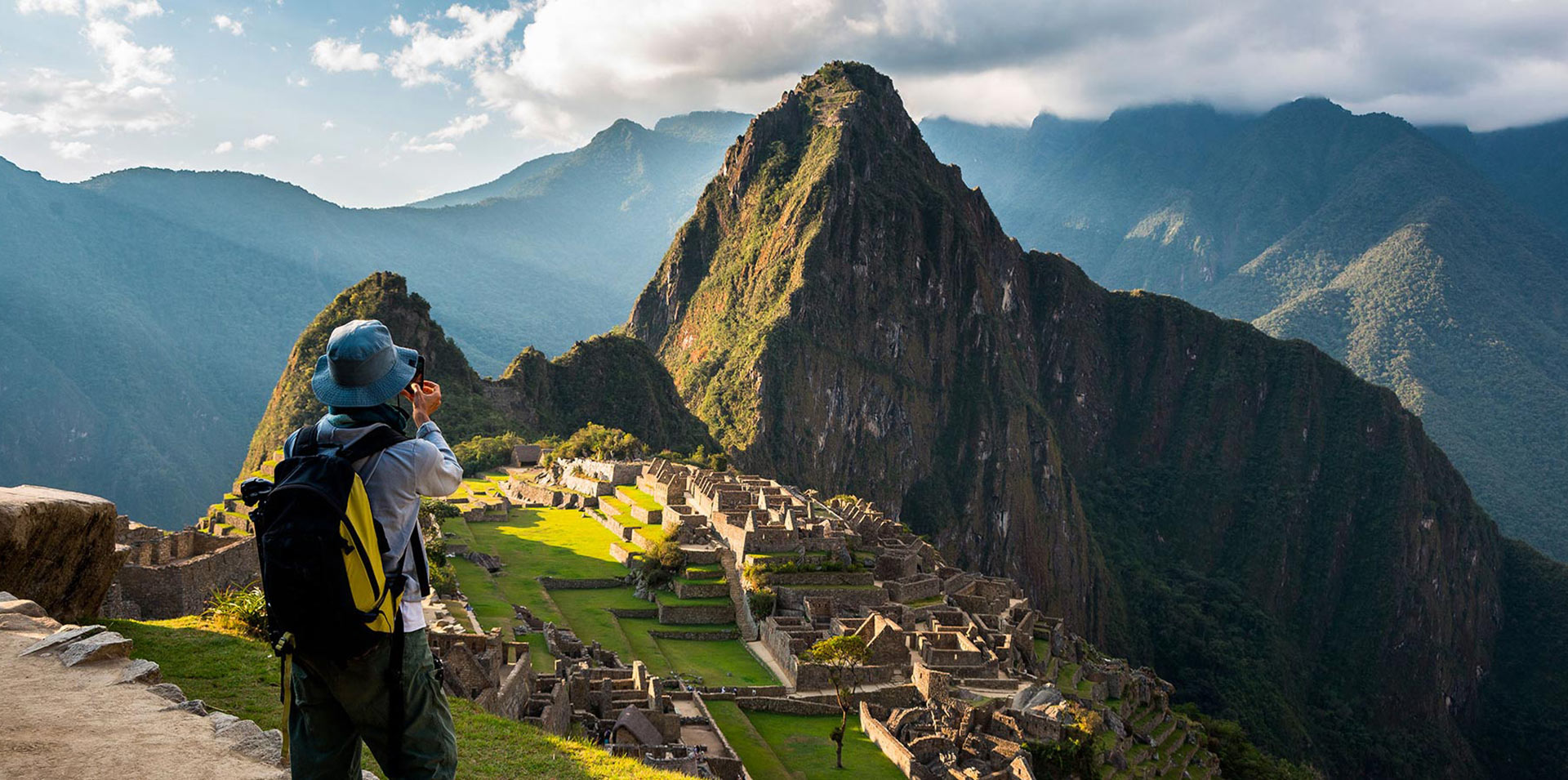
Tourist photographing Machu Picchu
Machu Picchu was built during the height of the Inca Empire, specifically in the mid-1400s. The exact purpose of interesting facts about Machu Picchu is still debated among historians and archaeologists. Still, it is believed to have served as a royal estate for the Inca emperor Pachacutec. The site is renowned for its impressive stone architecture, stunning terraced landscapes, and significance as a cultural and historical landmark.
Machu Picchu during its construction is still a matter of scholarly debate, and estimates can vary. While some archaeologists have suggested that the population could have been around 750 to 1000 people, other estimates propose different numbers. The available evidence from archaeological studies and the site’s layout suggests that it was likely inhabited by a relatively small community of people who served various functions, including agricultural work, construction, religious activities, and supporting the needs of the ruling elite.
Given the remote location and the site’s function as a royal estate or ceremonial center, it might have supported a smaller population than some of the Inca Empire’s major cities. Regardless of the specific number of important facts about Machu Picchu, its historical and cultural significance remains undeniable, and its mysteries intrigue researchers and visitors alike.

Close-up view of the citadel of Machu Picchu
The interesting fact about Machu Picchu City was built primarily using a construction technique known as “ashlar masonry,” where stones were precisely cut and fitted together without using mortar. Here are some key details about this technique:
The incredible stonework at fun facts about Machu Picchu demonstrates the advanced engineering knowledge and architectural skills of the Inca civilization. It has also contributed to the site’s preservation over the centuries, making it a stunning example of ancient architectural mastery.
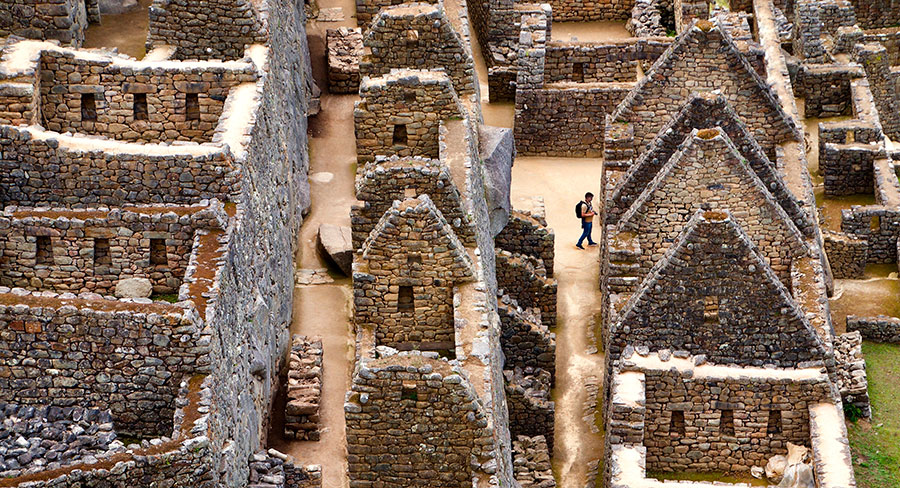
Tourist walking through the Machu Picchu Citadel
Hiram Bingham was an American academic, historian, and explorer, deeply intrigued by the history of the Inca civilization. His motivation lay in uncovering ancient Inca sites to advance his scholarly pursuits.
Upon arriving in Peru, Bingham’s expedition commenced its exploration of diverse regions, all in pursuit of Vilcabamba. It was engaging with locals and consulting historical records aided in narrowing down potential locales.
With conviction, Bingham considered himself to have stumbled upon the “Lost City of the Incas,” speculating that Machu Picchu could potentially be the fabled Vilcabamba. The term “Machu Picchu” itself, denoting “Old Peak” in Quechua—the language of the Inca Empire—underscores its position atop a mountain.
Hiram Bingham’s rediscovery of Machu Picchu is pivotal in comprehending Inca history and architecture, fundamentally shaping our perception of this ancient civilization and its remarkable feats. Visiting the Lost City is one of the things to do in Peru you can’t miss.
Machu Picchu, the ancient Incan citadel in the Andes mountains of Peru, is often associated with llamas due to their historical significance and role in the region’s culture and economy.
Here are some of the connections between Machu Picchu and llamas:
Overall, the connections between fun facts about Machu Picchu and llamas highlight the intricate ways these animals were integrated into the fabric of Inca society and their importance in both practical and symbolic contexts.
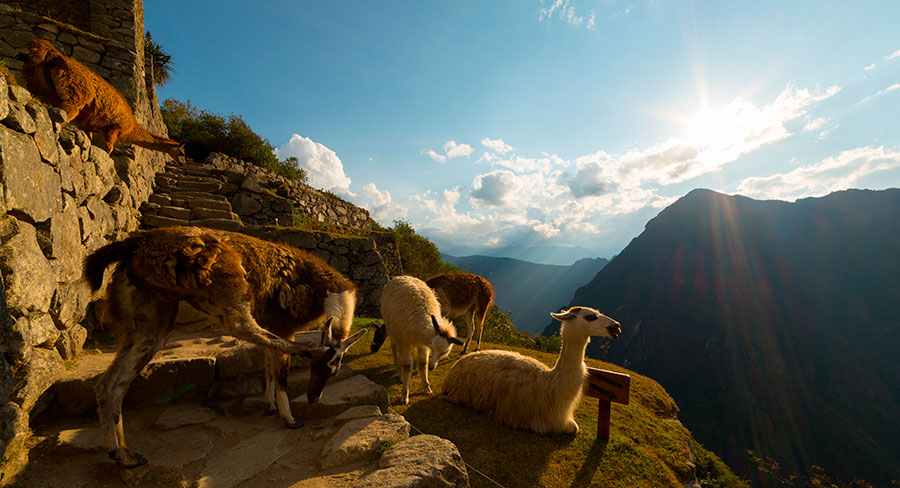
A group of llamas in Machu Picchu
Machu Picchu is divided into different sectors, each serving specific functions within the ancient Inca citadel.
Agricultural Sector: This area of Machu Picchu was primarily dedicated to farming and food production. The Incas utilized terraced fields to grow crops such as maize, potatoes, quinoa, and other staples. On your trip to Peru, you can’t miss the best peruvian dishes made with unique ingredients.
Urban Sector: The urban sector of Machu Picchu includes the residential, religious, and administrative buildings where people live and carry out various activities. The most iconic structures, like the Intihuatana stone (used for astronomical and ritual purposes) and the Room of the Three Windows (a ceremonial chamber), are found in this sector.
It’s important to note that the classification of Machu Picchu into agricultural and urban sectors is a simplified way of understanding its layout. The site is a complex and multifaceted archaeological marvel that holds a significant place in Inca history and culture.
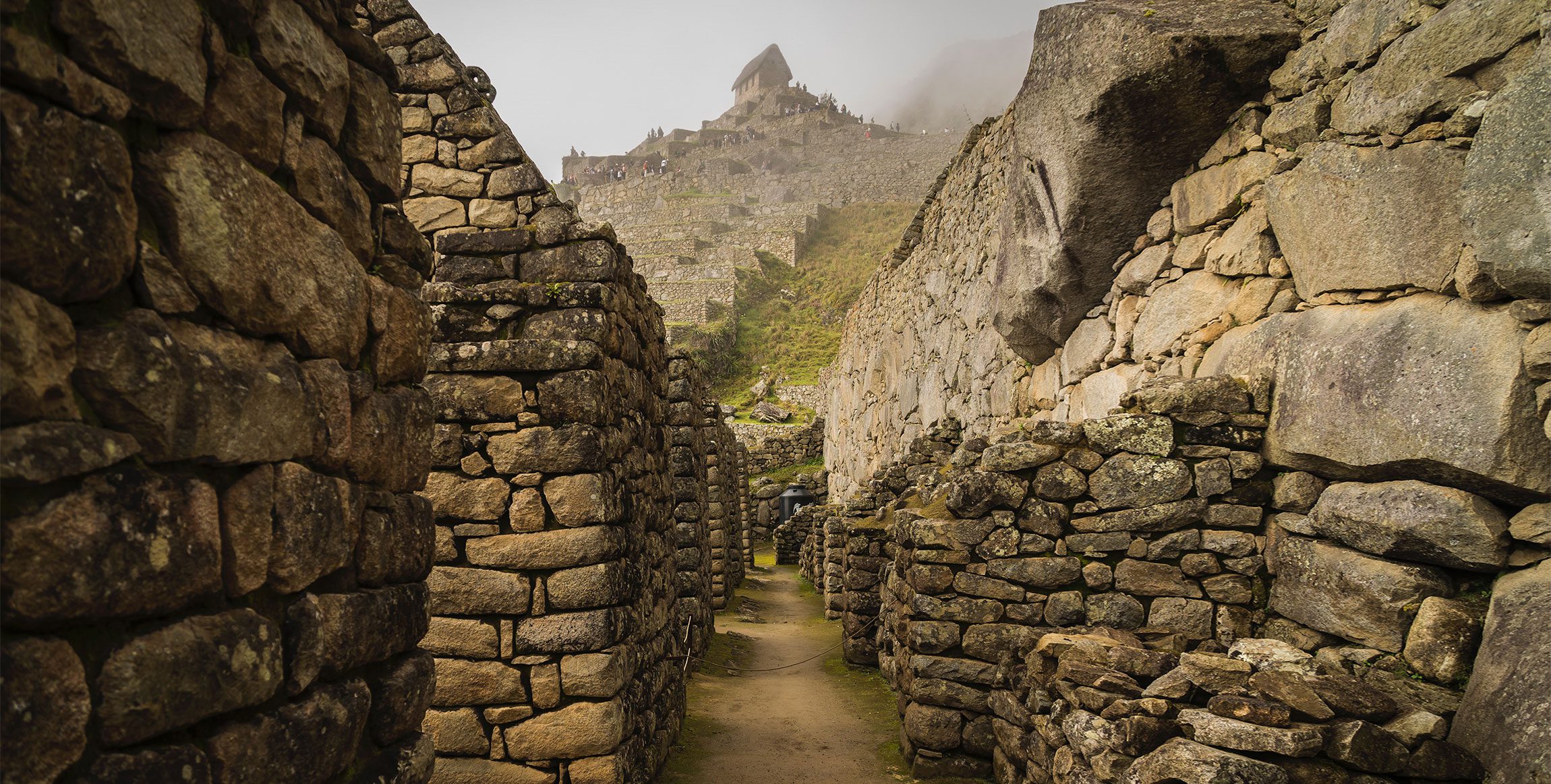
Corridors and paths of Machu Picchu
The agricultural sector of Machu Picchu was indeed dedicated to the cultivation of various crops such as maize (corn), potatoes, quinoa, and other staples. The Inca terraced fields in this sector were ingeniously designed to provide fertile soil for these crops and to maximize the use of the limited available land in the mountainous region.
The Incas employed advanced agricultural techniques, including terrace farming, to create flat areas on the slopes of the Andes mountains where they could grow crops. These terraces prevented soil erosion and allowed for efficient water drainage and distribution. This agricultural innovation was crucial for sustaining the population in and around Machu Picchu. The site’s unique geographical location and ingenious farming methods significantly influenced the Inca civilization’s ability to thrive in this challenging environment.
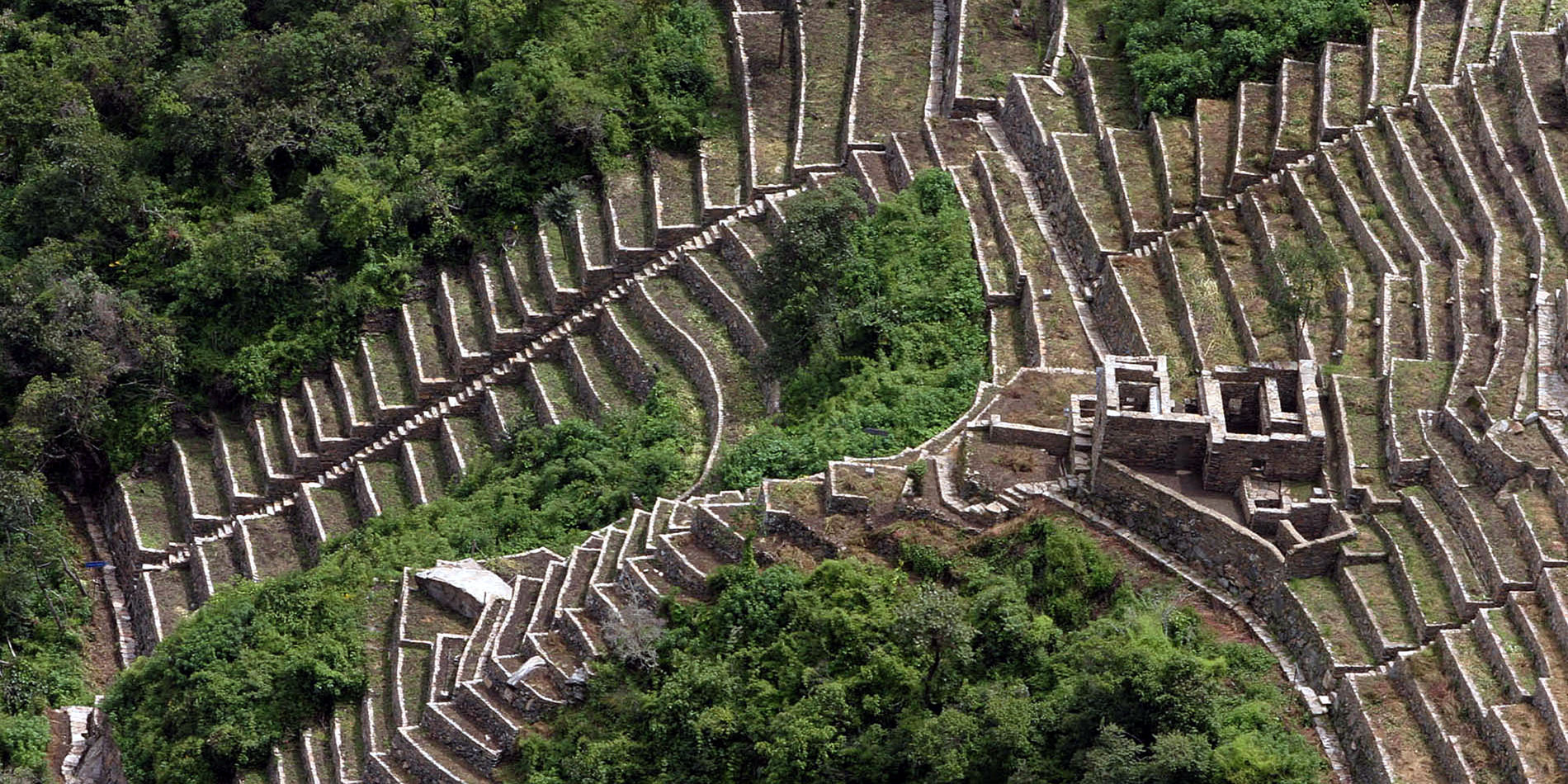
Skyview of terraced agriculture technique
Inca Trail is a famous trekking route in Peru that leads to the ancient Inca citadel of Machu Picchu. It’s one of the world’s most popular and iconic trekking experiences, offering breathtaking views of the Andes Mountains, diverse ecosystems, and archaeological sites.
Interesting facts about Machu Picchu are that several trekking routes lead, but the Classic Inca Trail is the most well-known and preserved. It usually takes about 4 days and 3 nights to complete.
As the Inca Trail is a UNESCO World Heritage site, it’s crucial to follow Leave No Trace principles and respect the environment and historical sites. Stay on designated paths, avoid littering, and respect the local culture.
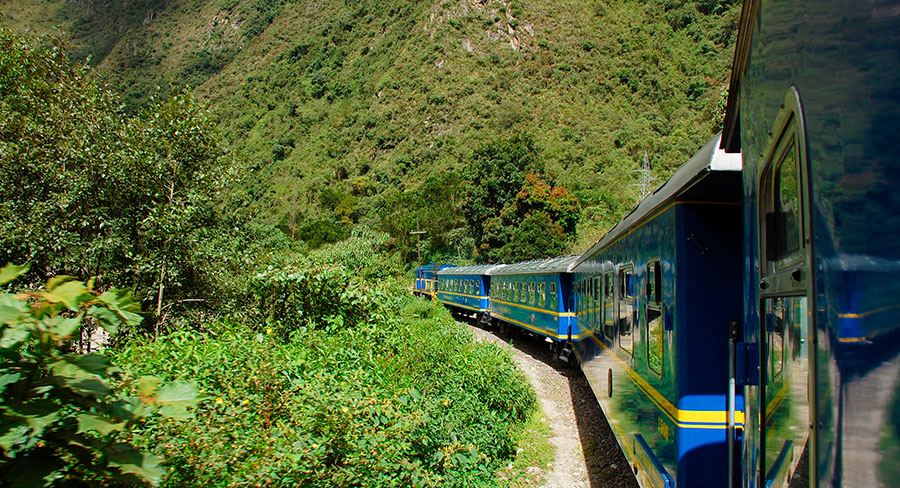
Train traveling from Cuzco to Machu Picchu
Machu Picchu is renowned for its breathtaking vistas and stunning natural surroundings. The ancient Incan city is high in the Andes Mountains of Peru, offering visitors panoramic views of the surrounding landscape. The rugged beauty of the Andes, with their jagged peaks and lush valleys, creates a dramatic backdrop for the archaeological wonder that is Machu Picchu.
The Urubamba River, also known as the Vilcanota River, flows through the valley below Machu Picchu, adding to the scenic allure. The river winds its way through the lush greenery, enhancing the overall picturesque setting of the site.

Urubamba River landscape
The Inca civilization was renowned for its advanced knowledge and achievements in various fields, including architecture, medicine, and astronomy. Here’s a brief overview of their accomplishments in these areas:
Fun facts about Machu Picchu are that the Inca civilization’s achievements in architecture, medicine, and astronomy were a testament to their ingenuity, adaptability, and deep connection with their environment.
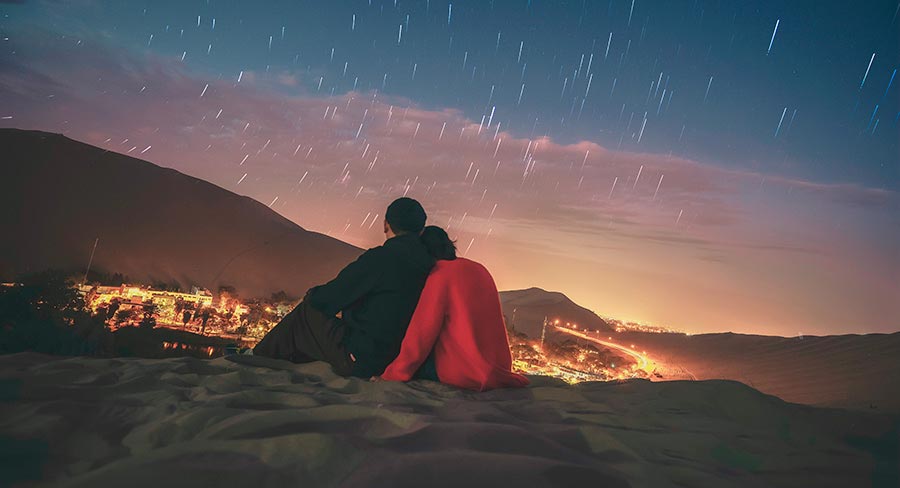
Couple admiring the stars in Huacachina, Peru
It’s a common misconception that Machu Picchu was built to replicate the Inca’s heavenly universe. While Machu Picchu has significant cultural and symbolic importance in the Inca civilization, the idea that each sector represents a specific aspect of the Inca’s heavenly universe must be supported by historical or archaeological evidence.
While the Incas had a complex cosmology and spirituality, the exact purpose of Machu Picchu’s layout and design is still debated among archaeologists and historians. While it’s true that the Incas often incorporated their understanding of the cosmos into their architecture and urban planning, the idea that each sector of Machu Picchu represents explicitly different aspects of their heavenly universe is not a widely accepted interpretation.
Overall, Machu Picchu’s combination of historical significance, stunning natural beauty, and intricate architecture make it a symbol of ancient Incan civilization and a cherished destination for travelers worldwide.
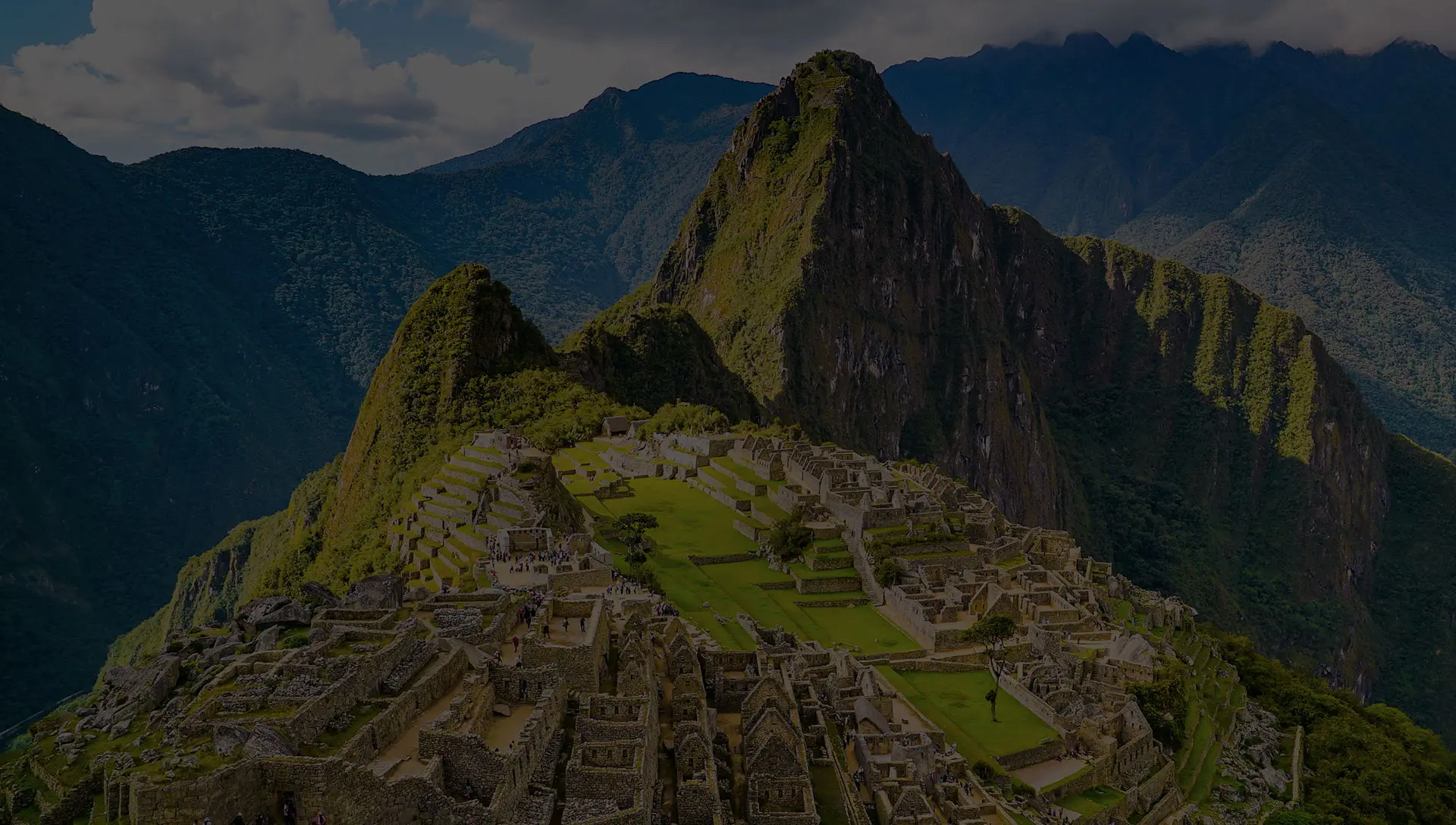
Machu Picchu viewed from the distance
The name “Intihuatana” is Quechua in origin, with “inti” meaning “sun” and “huatana” meaning “to tie up.” The stone was considered an astronomical and ceremonial device to observe the movements of the Sun and other celestial bodies. During certain times of the year, the shadow cast by the Intihuatana stone aligns with specific points on the horizon, indicating solstices and equinoxes.
The Incas deeply connected with celestial events and often integrated their understanding of the cosmos into their religious and spiritual practices. The Intihuatana stone’s alignment with astronomical events likely held significance for rituals and ceremonies related to the changing seasons and agricultural cycles.
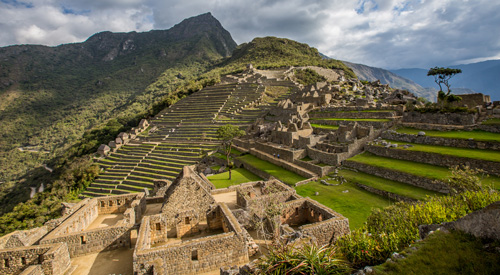
Machu Picchu Citadel, Peru
The Intihuatana stone at Machu Picchu is believed to have been used to measure the Sun’s position during solstices and equinoxes. The stone’s design and orientation allowed the Inca priests and astronomers to observe and track the Sun’s movements throughout the year, particularly during significant celestial events like the solstices (the longest and shortest days of the year) and the equinoxes (when day and night are of approximately equal length).
The precise craftsmanship of the Intihuatana stone, its alignment with the cardinal points, and the way its shadow interacted with the surrounding landscape likely provided valuable information for the Incas to determine the changing seasons, mark important agricultural and religious dates, and conduct ceremonies related to these astronomical events.
The Intihuatana stone’s role as an astronomical observatory underscores the Incas’ sophisticated understanding of celestial phenomena and their integration of this knowledge into their cultural and spiritual practices.

Machu Picchu constructions
The Inca civilization was deeply rooted in religious beliefs, and the Temple of the Sun likely served as a sacred space for rituals, ceremonies, and offerings to their deities, particularly Inti, the Sun God.
It is an advanced knowledge of astronomy, and the Temple of the Sun’s architecture is believed to have been aligned with astronomical events such as solstices and equinoxes. This alignment may have influenced their agricultural calendar and religious ceremonies.
This spot represents a key element of Inca culture and identity. It symbolizes the Inca’s reverence for the Sun as a divine source of energy and life, and it serves as a testament to their spiritual beliefs and ability to create monumental structures in challenging mountainous terrain.
The Temple of the Sun, like other structures at Machu Picchu, continues to be a subject of archaeological research and study. Researchers aim to uncover more about its functions, rituals, and the meanings behind its architectural elements, providing insights into Inca society and spirituality.
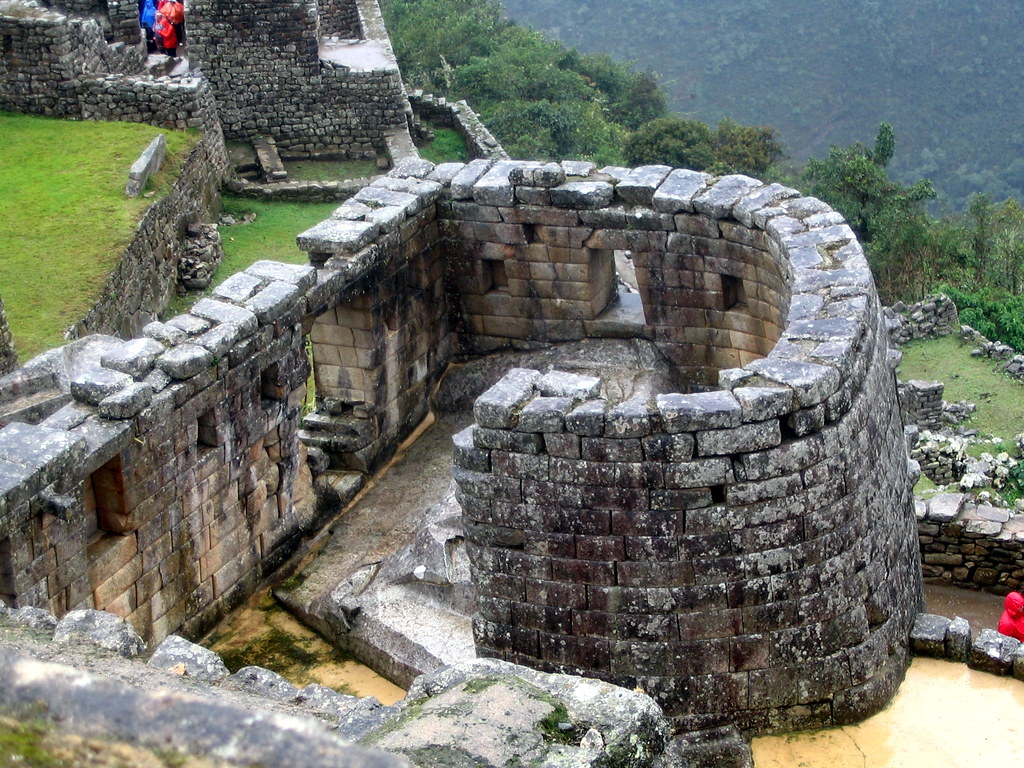
Temple of the Sun in Machu Picchu, Peru
Machu Picchu was likely abandoned in the mid-16th century due to the Spanish conquest of the Inca Empire. The exact reasons for its abandonment have yet to be fully discovered, but it’s widely believed that the site’s decline was related to the upheaval caused by the Spanish invasion and subsequent colonization.
When the Spanish conquistadors, led by Francisco Pizarro, arrived in the region in the early 16th century, they brought diseases, warfare, and disruption to the local populations. This devastated the Inca society, including its political, economic, and social structures. Being a relatively remote and defensible location, Machu Picchu might have been abandoned due to these upheavals.
The Spanish conquistadors were primarily interested in looting valuable resources, and Machu Picchu’s location helped it escape their notice for a significant amount of time. The outside world abandoned and mostly forgot the site until American historian and explorer Hiram Bingham rediscovered it in 1911. The Spanish conquest marked a significant turning point in the Inca Empire’s history and profoundly impacted the Andean region, leading to the decline of many Inca sites, including Machu Picchu.
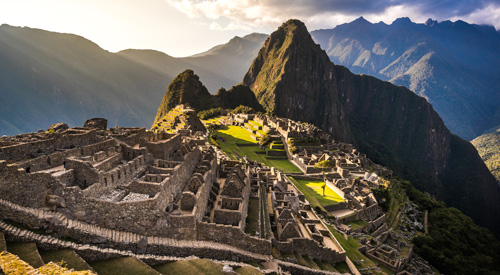
Machu Picchu, Peru
Machu Picchu was constructed without the use of wheels or draft animals. The Inca civilization achieved this remarkable feat of engineering and construction through manual labor and sophisticated techniques.
The lack of wheels and large animals for transportation posed a significant challenge to the Inca builders, but they developed innovative methods to overcome these limitations. The construction of Machu Picchu involved careful planning, precise stone-cutting techniques, and human labor for moving and shaping the massive stones that make up the structures.
The Incas used stone tools to carve the stones to fit together perfectly, and they created a network of ramps, levers, and a workforce to transport the stones from quarries to the construction site. The construction of the complex terraces, buildings, and intricate stone masonry at Machu Picchu showcases the ingenuity and engineering capabilities of the Inca civilization.
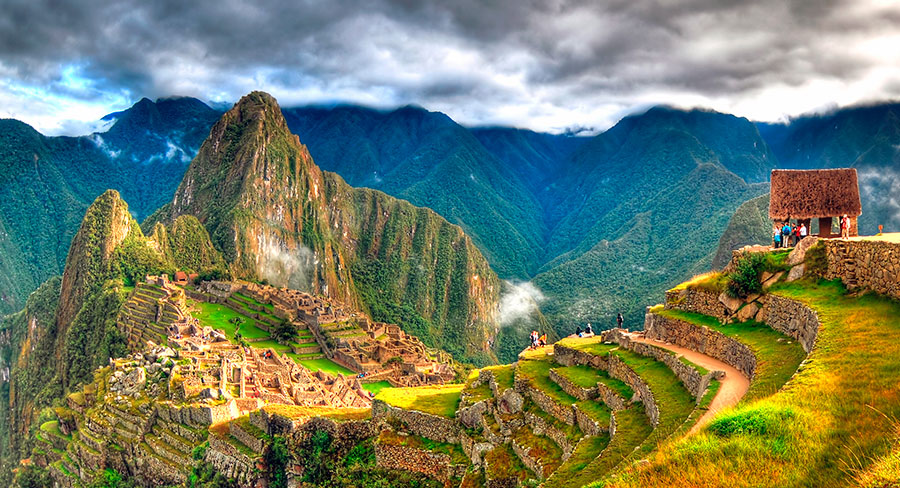
Colorful Machu Picchu Citadel Landscape
Machu Picchu, one of the most iconic and visited archaeological sites in the world, faces several threats to its preservation. These threats arise from a combination of natural and human factors. Some of the key threats include:
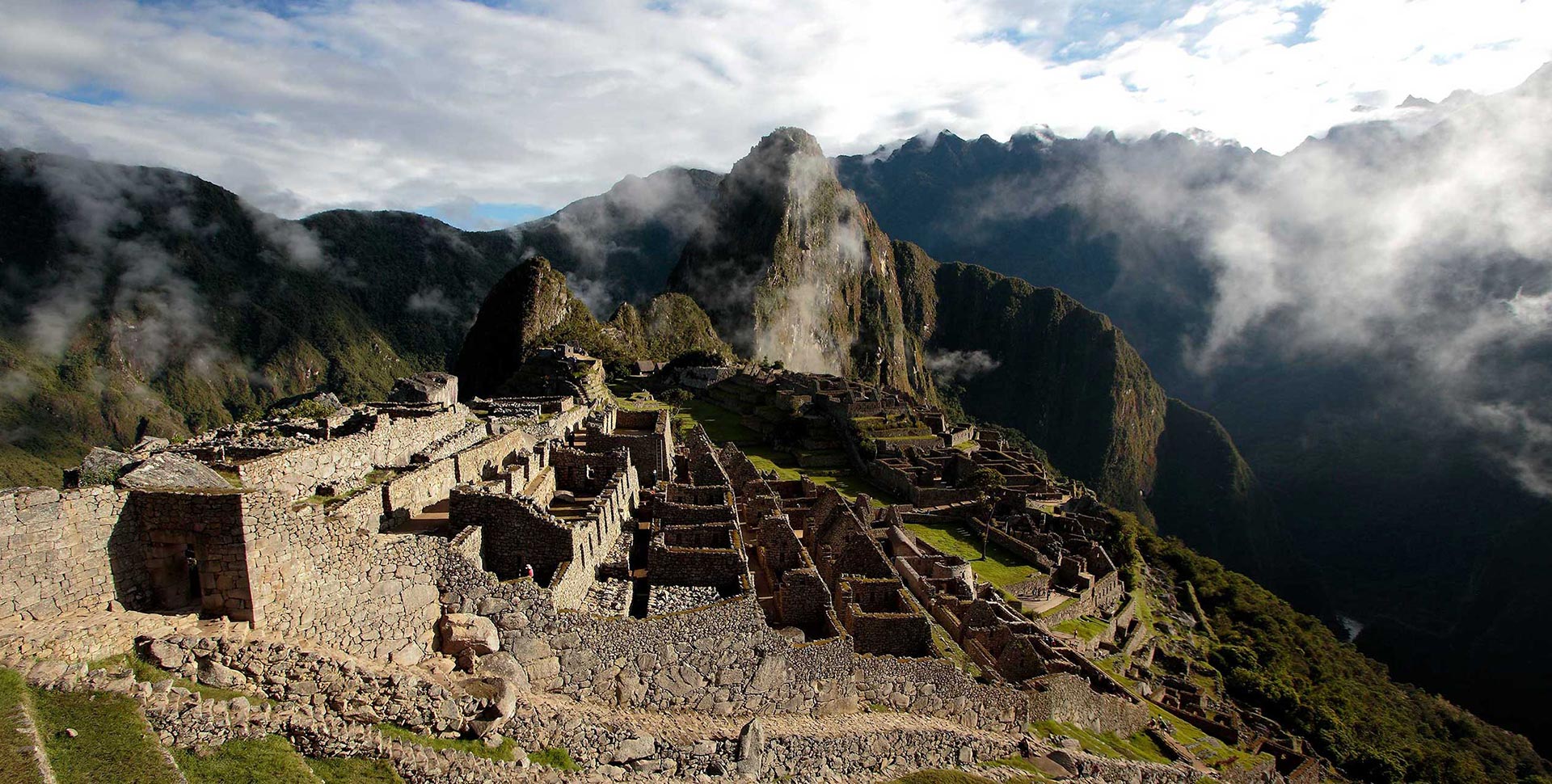
Machu Picchu from afar
Responsible tourism practices, strict regulations, investment in infrastructure, community involvement, and ongoing research are all vital components of these preservation efforts. International organizations, governmental bodies, and UNESCO also play essential roles in monitoring and safeguarding the site’s cultural and natural heritage.
Weather in Machu Picchu
The weather in Machu Picchu can vary depending on the time of year due to its location in the Andes Mountains. The high altitude and the surrounding geography influence the climate.
Dry Season (May to September):
Wet Season (October to April):
Remember that weather can be unpredictable, so it’s a good idea to check the local forecast before your trip and pack accordingly.
Machu Picchu was likely abandoned when the Spanish conquistadors arrived in the region. It is believed to have been abandoned around the mid-16th century, possibly a few decades before the Spanish invasion of the Inca Empire. As a result, the Spanish conquistadors never discovered or laid eyes on Machu Picchu during their conquest and colonization of the region.
This remote location and the fact that it was abandoned and not extensively documented in historical records contributed to its “lost city” status. The site remained hidden from the outside world until its rediscovery by Hiram Bingham in 1911.
The fact that Machu Picchu was not plundered or destroyed by the Spanish conquest allowed it to remain largely intact, preserving its architectural and cultural significance for future generations to appreciate and study.
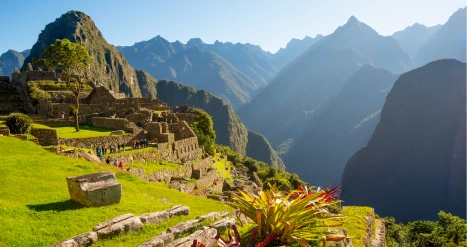
Landscape of Machu Picchu surrounded by mountains
Machu Picchu is not only a remarkable archaeological site but also a biodiverse ecosystem that is home to a variety of flora and fauna. The site’s location within the Andes mountains and its diverse microclimates contribute to its rich ecological diversity.
Some of the notable species found in the Machu Picchu area include:
Peruvian Spectacled Bear: Also known as the Andean bear, the Peruvian spectacled bear is the only bear species native to South America.
Pumas: Pumas, also known as mountain lions or cougars, are carnivorous predators that inhabit the Andean region. While elusive and not commonly seen, they are a part of the local ecosystem.
Orchids: Machu Picchu is indeed home to a diverse array of orchid species. With over 400 species of orchids recorded in the area, it’s a hotspot for orchid enthusiasts and researchers.
Birds: The site is also a haven for birdwatchers, with various bird species, including the Andean condor, hummingbirds, and tanagers.
Other Wildlife: Various other species of mammals, reptiles, amphibians, and insects inhabit the area around Machu Picchu, contributing to its rich biodiversity.
Efforts have been made to protect and preserve the region’s ecological balance, ensuring that the natural environment remains as intact as possible alongside the conservation of the archaeological treasures.
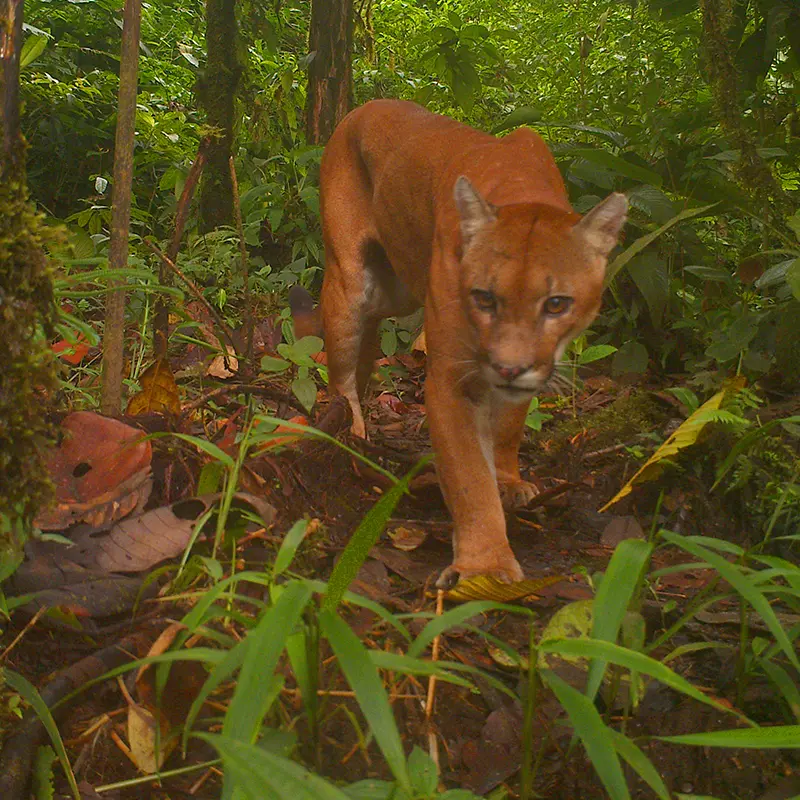
Puma of the Andean region
Machu Picchu is a place of mystery and wonder, steeped in history and filled with beauty that will leave you breathless. Amidst the changing landscape of our world, Machu Picchu endures as a testament to the incredible achievements of human beings. We hope these 21 important facts about Machu Picchu have inspired you to add this excellent site to your travel list and explore its wonder.
As of my last knowledge update in September 2021, Machu Picchu had implemented measures to limit access to preserve the site and manage tourism. These measures were in place to minimize the impact of visitors on the fragile archaeological site and its surrounding environment. However, please note that conditions and regulations can change, so you should check with official sources or tour operators for the most up-to-date information before planning your visit to Machu Picchu.
Keep in mind some regulations before your travel: